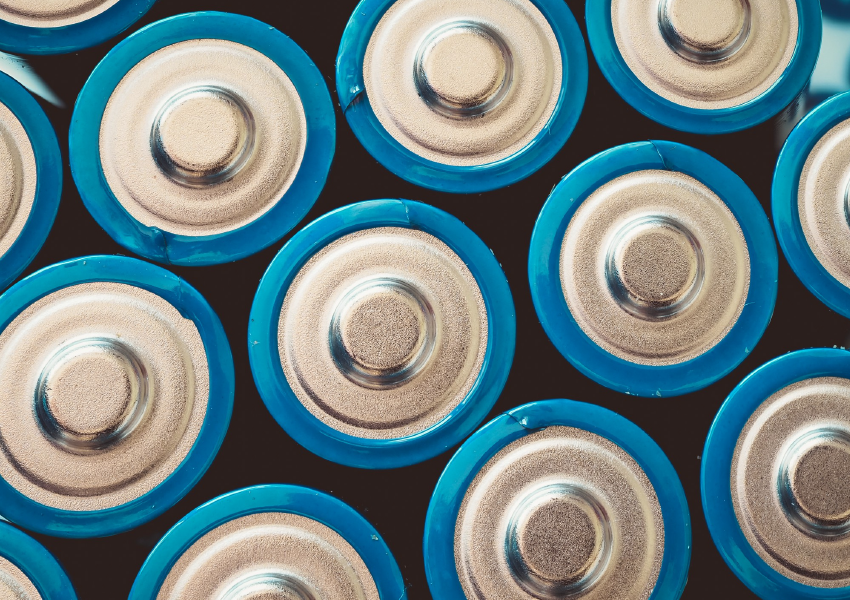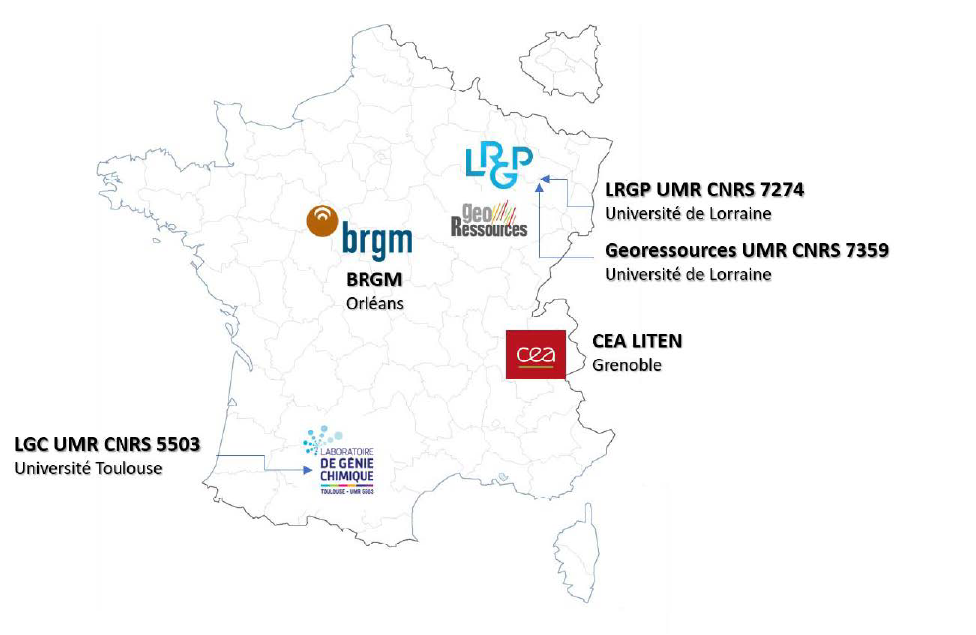
Batteries axis
Excerpt
Project : LULABAT, procédé de recyclage innovant, durable, économique et flexible des batteries lithium-ion usagées
Alexandre CHAGNES, Professor (Université de Lorraine)
Contact : Alexandre.chagnes@univ-lorraine.fr
Marlène CHAPUIS, Laboratory Manager (CEA – LITEN – DTNM – STDC – LVME)
Contact : marlene.chapuis@cea.fr
Launch date: 01/02/2023
Reference: ANR-22-PERE-0007
The first phase of the LULABAT research program aims to identify and address the main challenges in battery recycling, focusing primarily on the recovery of metals present in NMC-type cathode materials, as well as graphite constituting the anode (the main components of today’s batteries). The aim is to develop new unit operations that could reduce the operating costs and environmental impact of lithium-ion battery recycling processes, particularly as regards the hydrometallurgy stage.
Keywords: Recycling, lithium ion batteries, hydrometallurgy
Tasks
Our researches
Towards a better understanding of the battery-grade graphite value chain and market, and identification of the future role of recycled graphite
Carry out a detailed study of the graphite market, including natural and synthetic graphite, as well as graphite obtained from the recycling of end-of-life batteries.
This study will address economic as well as environmental and societal factors.
The 1st subtask will enable an analysis of the graphite value chain and market, with a focus on China’s supply strategy.
The 2nd subtask will identify and estimate the most significant environmental impacts of natural, synthetic and recycled graphite production. The final subtask will quantify the beneficial effects of recycling graphite from end-of-life batteries.
Contribution of leaching-attrition phenomena to the treatment of NMC by dissolution/precipitation
Laurent Cassayre, LGC
The aim is to study the impact and potential of the leach-attrition process on NMC dissolution and precipitation stages for the recovery of Ni and Co in recoverable form. The advantage of this process is that the surface state of the particles is refreshed by the continuous removal of surface deposits likely to slow down or block their leaching, thanks to the suspension of a solid media (typically millimeter-sized silica beads) in the leaching reactor. In this complex reactive environment, the study focuses on exploring the operating conditions required for selective dissolution of certain BM elements, in particular lithium.
Electrodialysis in hydrometallurgical processes
Alexandre Chagnes, Université de Lorraine – Georessources
The aim is to evaluate the potential of this technology for recycling lithium-ion batteries. The aim is to use electrodialysis for the selective extraction of lithium, in order to produce battery-grade lithium hydroxide. At the same time, the integration of other unit operations downstream of electrodialysis, such as precipitation, crystallization and liquid-liquid extraction, will be studied, in order to recover the other metals present in batteries in the form of sulfate, while reducing reagent consumption and effluent production.
Multi-criteria decision system for assessing the sustainability of battery raw materials
Alexandre Nominé, Université de Lorraine
Develop decision support software (HERawS) that analyzes the impact of scaling up primary and recycled batteries.
Users will be able to create new batteries and simulate their durability prior to primary manufacture and recycling. Users will be able to upload their own data on battery performance, material sourcing and the relative importance of different sustainability criteria.
Understanding oxidative precipitation mechanisms to improve Mn, Co, Ni separation
Emmanuel Billy, CEA – LITEN
Oxidative precipitation is a chemical approach to the extraction of metals of interest, which can complement or replace current methods. Oxidative precipitation offers advantages in terms of I) simplicity of industrial implementation and II) its complementarity to solvent extraction to reduce the number of extraction stages. The R&D work aims to understand the reaction pathways and mechanisms involved as a function of treatment parameters, which condition separation efficiency and selectivity. This work should make it possible to identify optimum operating conditions for evaluating the integration of the technology into recycling processes and the recovery of critical metals.
Innovative process for recycling cathode materials from lithium ion batteries
Alexandre Chagnes, Université de Lorraine -Georessources
In the light of the results of tasks 1 to 5 of the LULABAT program, the aim will be to propose an innovative, relevant and efficient global recycling process diagram for the recovery of cobalt, nickel and manganese and the production of the associated precursor salts. A SWOT analysis will be carried out.
The conclusions of this task will provide food for thought for a future European project.
Key numbers
Laboratories
Researchers
Total budget
Consortium
The technologies developed in this research program are disruptive, and are expected to reach TRL 4. This research program will therefore lead to patents and original articles in international journals, presentations at international conferences, and will help to structure French research in the field. A workshop open to the research community will be organized at the end of the project to present the results/advances and open a brainstorming session with the public.
The aim of the LULABAT research program is to develop technological building blocks that will reduce the economic and environmental cost of recycling processes as much as possible. To achieve this, the experimental conditions for each technological brick developed in LULABAT will be optimized to minimize energy consumption, reagent consumption and effluent production, as will the architecture of the process bringing together the technological bricks developed. Ultimately, the LULABAT project aims to quantify the environmental impacts avoided by implementing these technological bricks in a process, and to make a comparison with other more conventional processes for which data are available in the literature.
The LULABAT research project will enable the leading French scientific community in the field of battery recycling to work and exchange ideas. The 1st phase of the program has enabled the launch of 3 theses and 1 post-doctoral internship, and the training of 4 new people in the field of lithium ion battery recycling. The skills developed are varied and range from life cycle analysis to hydrometallurgy.

Project news
No news